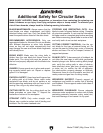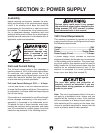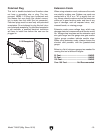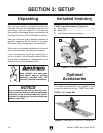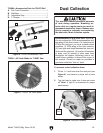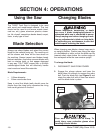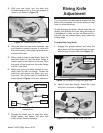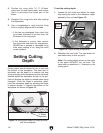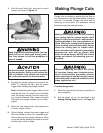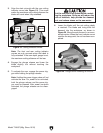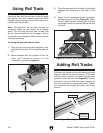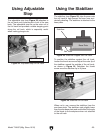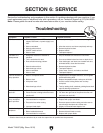
-18-
Model T10687 (Mfg. Since 10/12)
Setting Cutting
Depth
Cutting depth should always be set at just past
the bottom of the workpiece. The best way to
accurately set the depth is to position the saw
along one edge of the workpiece so that the blade
extends below the workpiece (similar to the pro-
cess of allowing the blade to extend when being
changed). Once the blade is extended, deter-
mine the necessary depth by allowing the blade
to extend roughly
1
⁄8" beyond the bottom of the
workpiece, as shown in Figure 14.
3. Position the riving knife
3
⁄32"–
1
⁄8" (2-3mm)
away from the saw blade teeth, and ensure
that it is just above the lowest part of the
blade.
4.
Retighten the riving knife lock after making
the adjustment.
5. Use a straightedge to verify that the riving
knife is properly aligned with the blade.
— If the two are misaligned, then check that
your blade thickness is not less than the
thickness of the riving knife.
— If the thickness is correct, then remove
the riving knife and check for straightness.
NEVER use a warped or damaged riving
knife when making a cut; doing so could
cause kickback.
Figure 14. Setting saw depth by aligning blade
with the workpiece.
1
⁄8" Blade
Clearance
To set the cutting depth:
1.
Loosen the lock knob and adjust the depth
stop along the scale to the maximum depth
desired for the cut (see Figure 15).
2.
Retighten the lock knob. The saw blade will
now extend only to that set point.
Note: The cutting depth shown on the scale
is the depth WITHOUT the rail track. The
track adds an additional
3
⁄16" thickness to the
cutting point.
Figure 15. Depth-setting components.
Depth
Scale
Depth Stop
Lock Knob



